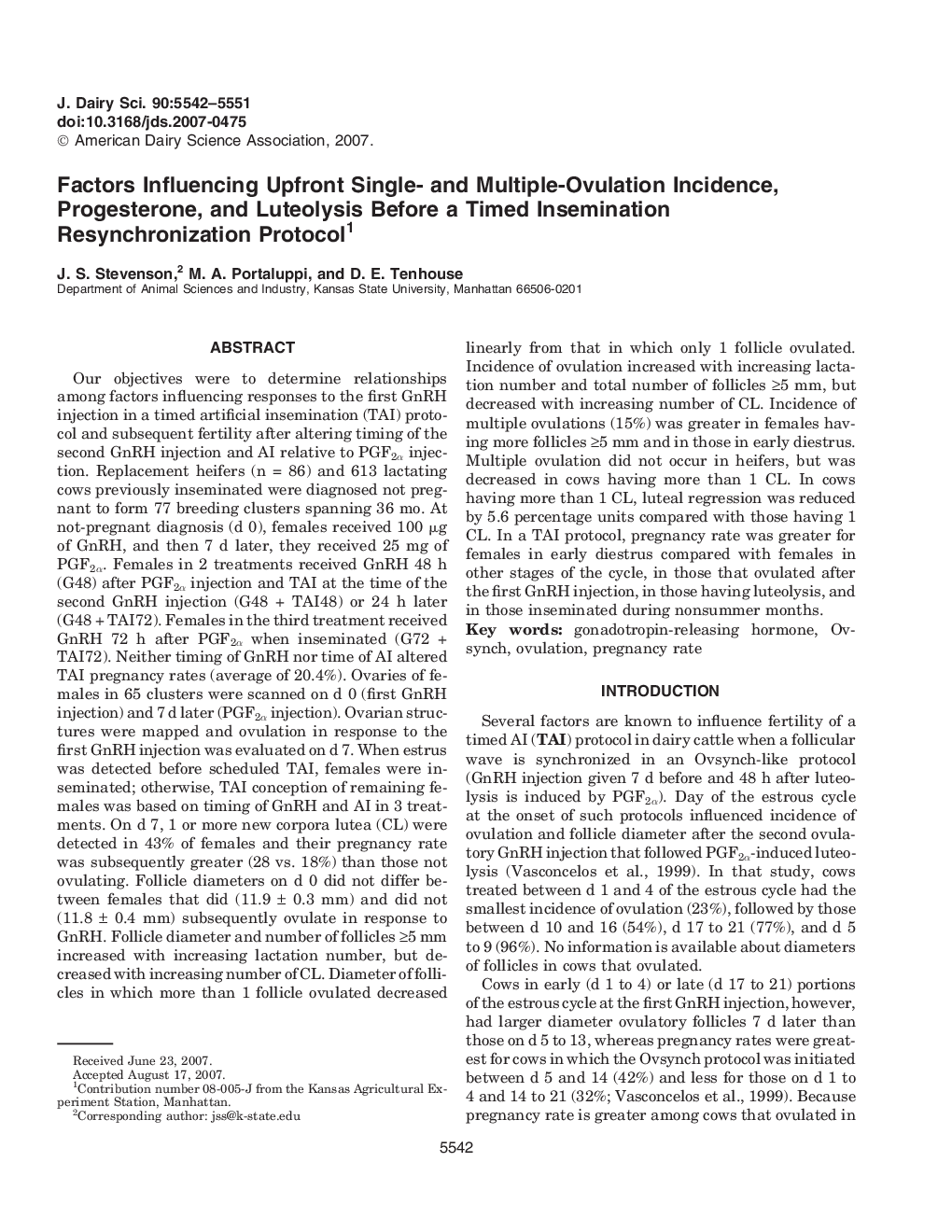| کد مقاله | کد نشریه | سال انتشار | مقاله انگلیسی | نسخه تمام متن |
|---|---|---|---|---|
| 2440180 | 1553847 | 2007 | 10 صفحه PDF | دانلود رایگان |

Our objectives were to determine relationships among factors influencing responses to the first GnRH injection in a timed artificial insemination (TAI) protocol and subsequent fertility after altering timing of the second GnRH injection and AI relative to PGF2α injection. Replacement heifers (n = 86) and 613 lactating cows previously inseminated were diagnosed not pregnant to form 77 breeding clusters spanning 36 mo. At not-pregnant diagnosis (d 0), females received 100 μg of GnRH, and then 7 d later, they received 25 mg of PGF2α. Females in 2 treatments received GnRH 48 h (G48) after PGF2α injection and TAI at the time of the second GnRH injection (G48 + TAI48) or 24 h later (G48 + TAI72). Females in the third treatment received GnRH 72 h after PGF2α when inseminated (G72 + TAI72). Neither timing of GnRH nor time of AI altered TAI pregnancy rates (average of 20.4%). Ovaries of females in 65 clusters were scanned on d 0 (first GnRH injection) and 7 d later (PGF2α injection). Ovarian structures were mapped and ovulation in response to the first GnRH injection was evaluated on d 7. When estrus was detected before scheduled TAI, females were inseminated; otherwise, TAI conception of remaining females was based on timing of GnRH and AI in 3 treatments. On d 7, 1 or more new corpora lutea (CL) were detected in 43% of females and their pregnancy rate was subsequently greater (28 vs. 18%) than those not ovulating. Follicle diameters on d 0 did not differ between females that did (11.9 ± 0.3 mm) and did not (11.8 ± 0.4 mm) subsequently ovulate in response to GnRH. Follicle diameter and number of follicles ≥5 mm increased with increasing lactation number, but decreased with increasing number of CL. Diameter of follicles in which more than 1 follicle ovulated decreased linearly from that in which only 1 follicle ovulated. Incidence of ovulation increased with increasing lactation number and total number of follicles ≥5 mm, but decreased with increasing number of CL. Incidence of multiple ovulations (15%) was greater in females having more follicles ≥5 mm and in those in early diestrus. Multiple ovulation did not occur in heifers, but was decreased in cows having more than 1 CL. In cows having more than 1 CL, luteal regression was reduced by 5.6 percentage units compared with those having 1 CL. In a TAI protocol, pregnancy rate was greater for females in early diestrus compared with females in other stages of the cycle, in those that ovulated after the first GnRH injection, in those having luteolysis, and in those inseminated during nonsummer months.
Journal: Journal of Dairy Science - Volume 90, Issue 12, December 2007, Pages 5542–5551